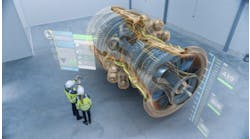Smart Industry: Are there differing / opposing perspectives on remote monitoring and optimization?
Kevin: The industry is generally aligned regarding the technology required to support remote monitoring. The industry differs when assigning a value to remote monitoring. At what point is it cost effective to deploy? What are the revenue streams that can be generated? Which business models will be successful? The responses to these questions depend on a number of factors and are different for almost every deployment. This much is clear—10 years from today the number of remotely monitored machines will be significantly higher.
Smart Industry: How are machine-builders using remote monitoring to improve productivity?
Kevin: Remote monitoring and, more importantly, remote access allow machine builders to reduce costs from day one by reducing onsite head counts during machine deployment (commissioning). Companies can send less support into the field, reducing travel costs and time lost to travel. Once a machine is deployed, remote access can be used to debug problems and support software updates, in some cases completely eliminating the need for onsite travel. Remote monitoring can be used to create a user-use profile, this data profile can be mined to determine when the customer may be in the market for a new machine or could be a target for a feature upgrade, aiding the overall sales process.
Smart Industry: How do cloud technology and the IoT factor into configuring, monitoring, control and troubleshooting equipment?
Kevin: Today the cloud is simply being used as a conduit to connect to machines and store data. Advanced analytics are only now beginning to pay dividends in the consumer market. We still have a ways to go on the manufacturing side with regards to leveraging the full potential of the cloud. One shift that will happen in the near future is increased access to advanced Manufacturing Execution Systems (MES), which were once only available to large manufacturers with deep pockets. The cloud will enable solutions to be offered as pay-per-use or pay-based-on-dollars-saved business models. Making these solutions available to small manufactures (less than 100 employees) could significantly improve the competitiveness of many small companies.
Smart Industry: What most excites you in the near future of industrial automation?
Kevin: We see a clear path to not only optimizing manufacturing but optimizing the entire customer/supplier relationship. New business models will be enabled that don’t even exist today. The idea of leasing a machine per part produced is just around the corner. There is even a possibility that manufacturers will be able to work together to share machines or assembly lines to improve machine utilization across the board. This will not only reduce the costs to produce product but will eliminate waste in the manufacturing base.
Smart Industry: What is the greatest present challenge facing industrial automation?
Kevin: Plug-and-play solutions need to be created to make it easier for any manufacturer to increase their level of automation. Many of the solutions today still require multiple engineering skill sets to create an optimized solution. Optimizing a manufacturing line needs to be as easy as downloading an app.



